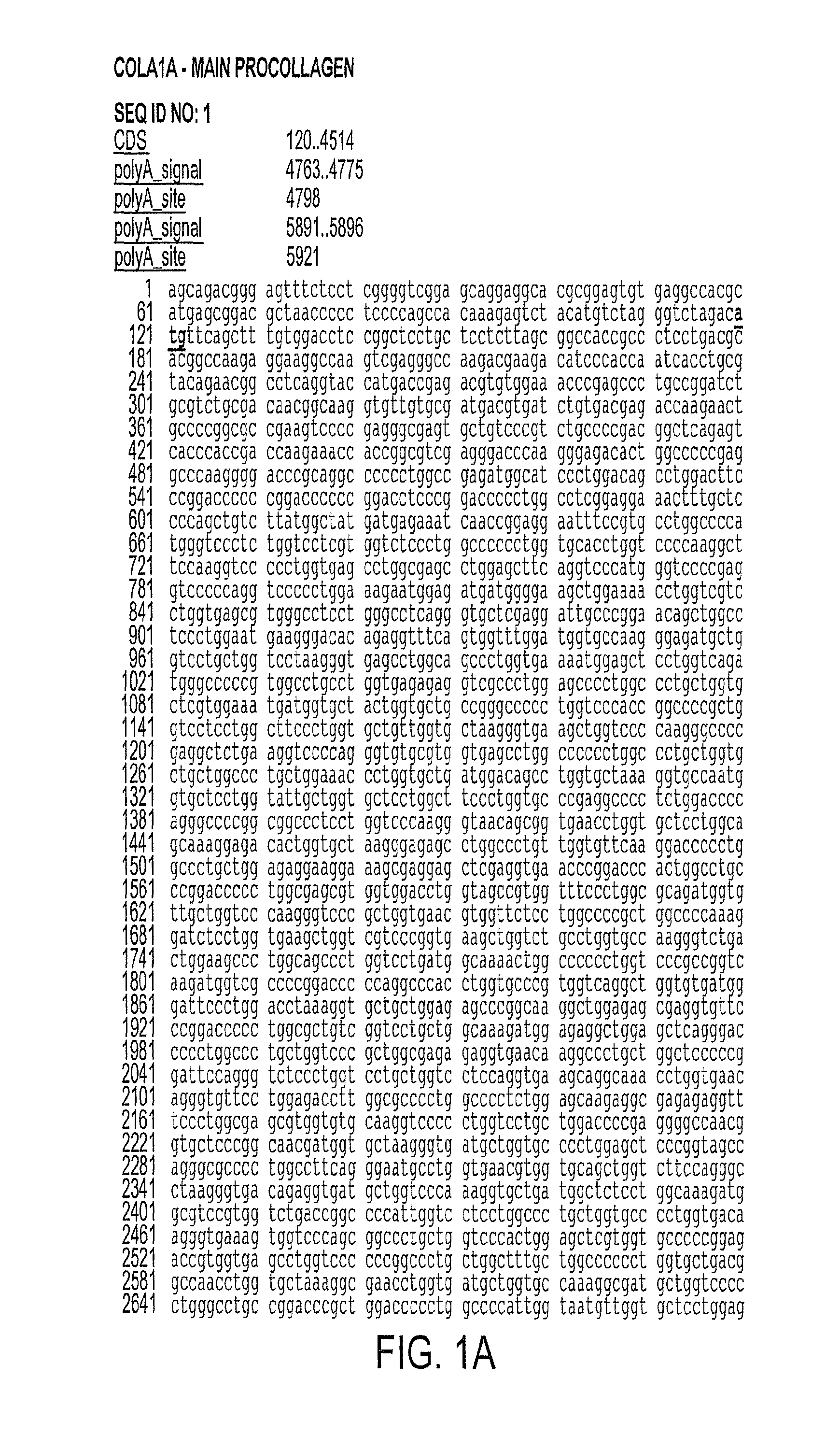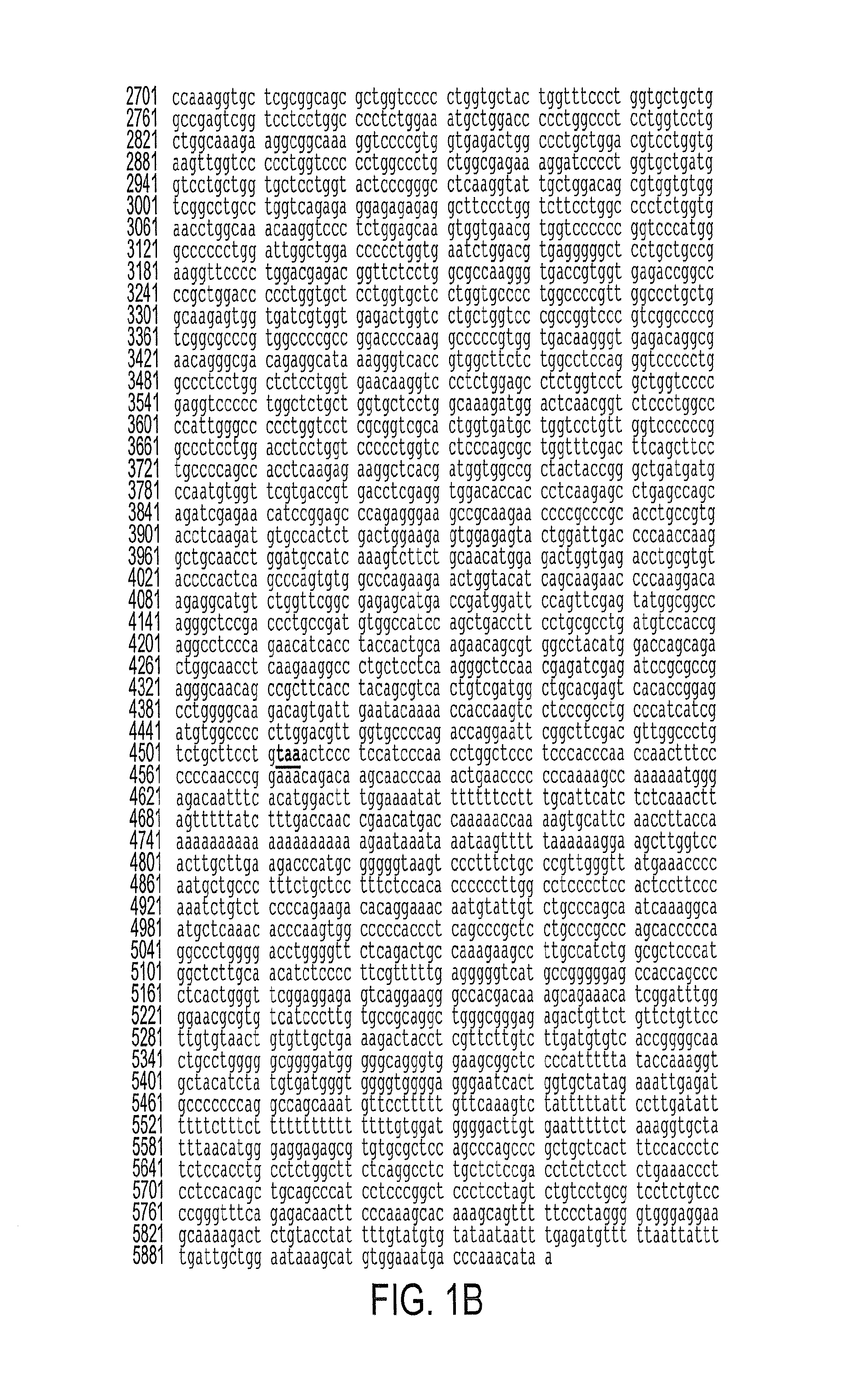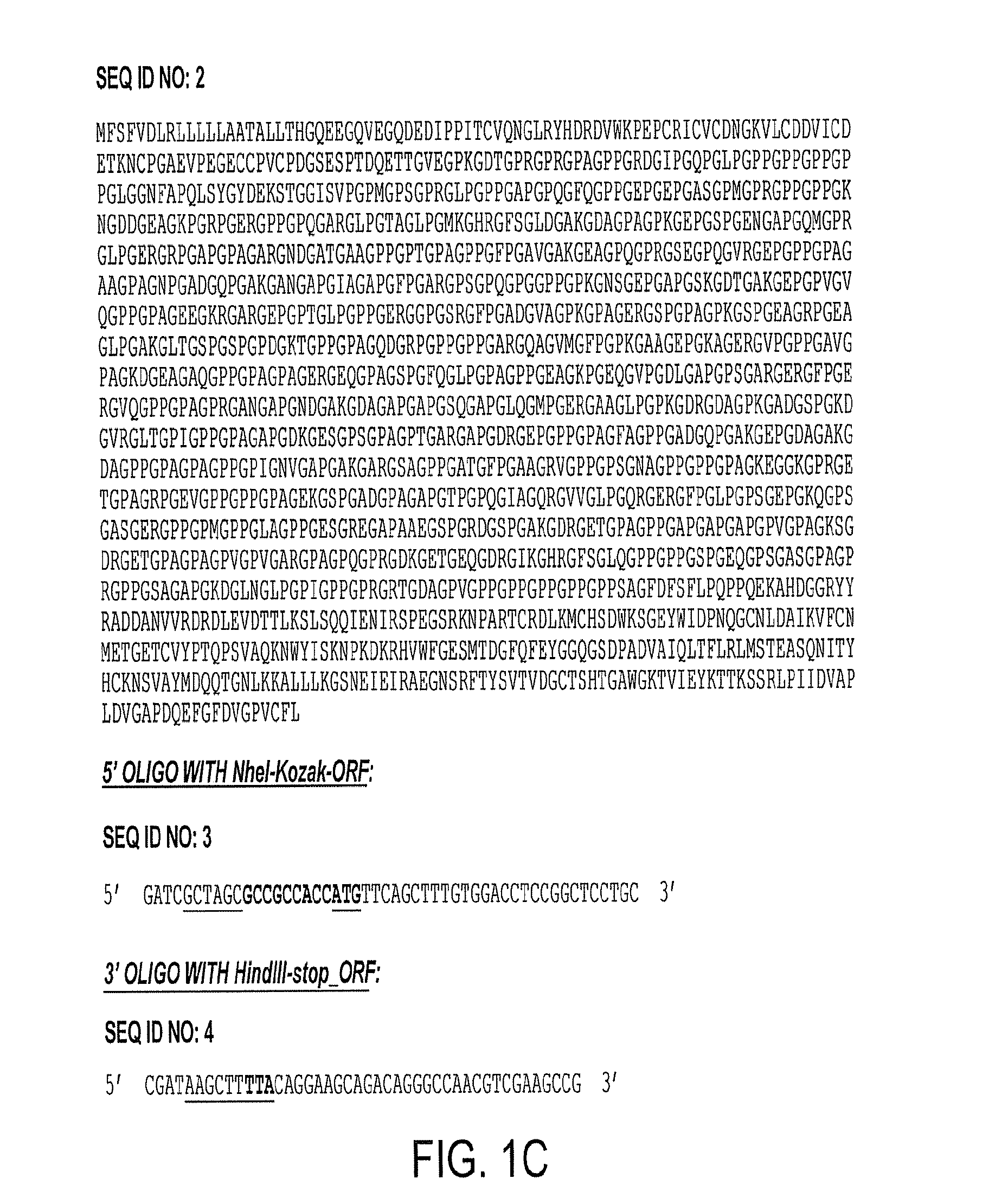Compositions and methods for genetic modification of cells having cosmetic function to enhance cosmetic appearance
a technology of cosmetic function and composition, applied in the field of compositions and methods for genetic modification of cells having cosmetic function to enhance cosmetic appearance, can solve the problems of cosmetic appearance undesirable changes, reduced expression and/or levels of skin proteins and other biomolecules, and/or dna repair enzymes, etc., to achieve the effect of improving cosmetic appearance, restoring or enhancing a biochemical and/or physiological process, and positive cosmetic appearan
- Summary
- Abstract
- Description
- Claims
- Application Information
AI Technical Summary
Benefits of technology
Problems solved by technology
Method used
Image
Examples
example 1
Amplification, Cloning, and Expression of Human Collagen α1 Type 1, Collagen α2 Type 1, TIMP-1, and Elastin from Normal Tissue cDNAs
[0326]First strand cDNAs generated from normal human tissues were purchased from BioChain Institute (Hayward, Calif.). Collagen α1 Type 1 (COLA1A), Collagen α2 Type 1 (COL1A2), and Elastin were amplified from normal human skin (Cat No. C1234218-10) cDNAs, whereas TIMP-1 was amplified from both normal human lung (Cat No. C1234152-10) and brain (Cat. No. C1244035-10) cDNAs. Gene amplifications were performed with high fidelity Platinum Pfx Polymerase (Invitrogen, Carlsbad, Calif.), according to manufacturer's instructions, with gene specific oligonucleotides. Table 1 summarizes oligonucleotide sequences used for amplification of each gene, as well as Polymerase Chain Reaction (PCR) conditions. Table 1 shows the oligonucleotide sequences and PCR parameters used in the amplification of COLA1A, COL1A2, Elastin, and TIMP-1 from normal human tissue cDNAs.
[0327...
example 2
Amplification, Cloning, and Expression of Human Keratinocyte Growth Factor-1 (KGF-1, FGF-7) from Normal Lung Tissue cDNAs
[0336]Materials and Methods
[0337]First strand cDNAs generated from normal human tissues were purchased from BioChain Institute (Hayward, Calif.). Keratinocyte Growth Factor-1 was amplified from normal normal human lung cDNAs (Cat. No. C1234152-10). Gene amplifications were performed with high fidelity Platinum Pfx Polymerase (Invitrogen, Carlsbad, Calif.), according to manufacturer's instructions, with gene specific oligonucleotides. Table 3 summarizes oligonucleotide sequences used for amplification of the KGF-1 gene, as well as Polymerase Chain Reaction (PCR) conditions.
[0338]
TABLE 3 Oligonucleotide sequences and PCR parameters used in the amplificationof KGF-1 from normal human lung tissue cDNAsTissueAnnealExtensionGenesource5′ oligo3′ oligotemptimeKGF-1lung5′-5′-55° C.1 min.GATCGCTAGCGCCGCCGATAAGCTTTTAAGTTATTCAGCCATAGGAAGAAAGTGGGCCATGCACAAATGGACTGTTTTTTGT-3′ 5...
example 3
Evaluating a KGF Plasmid Applied Topically in Mice
[0352]This experimental study was carried out in BALB / C mice to determine whether a KGF plasmid topically applied had a cosmetic rejuvenation effect on skin.
[0353]The experimental design was as follows: in the treated groups, the BALB / C mouse skin had the stratum corneum removed by brushing 100 strokes with a nylon brush. Brushing was utilized as a sub-therapeutic microdermabrasion technique. Control BALB / C mice had the hair clipped but were not “brushed.”
[0354]Two different vehicles were tested:
[0355]Vehicle A: 94% TE buffer (10 mM Tris); 5% Glycerin; and 1% Hydroxypropyl Methylcellulose.
[0356]Vehicle B: 88% TE buffer (10 mM Tris); 5% Glycerin; 5% Propylene Glycol; and 1% Hydroxypropyl Methylcellulose.
[0357]Two different plasmids were tested: The gWiz-KGF1 plasmid and the NTX-KGF1 plasmid were each tested at a single concentration of 2000 micrograms per ml for each plasmid. A single dose of 4 microlitres was applied on each mouse.
[0...
PUM
| Property | Measurement | Unit |
|---|---|---|
| temperature | aaaaa | aaaaa |
| temperature | aaaaa | aaaaa |
| molecular mass | aaaaa | aaaaa |
Abstract
Description
Claims
Application Information
 Login to View More
Login to View More - R&D
- Intellectual Property
- Life Sciences
- Materials
- Tech Scout
- Unparalleled Data Quality
- Higher Quality Content
- 60% Fewer Hallucinations
Browse by: Latest US Patents, China's latest patents, Technical Efficacy Thesaurus, Application Domain, Technology Topic, Popular Technical Reports.
© 2025 PatSnap. All rights reserved.Legal|Privacy policy|Modern Slavery Act Transparency Statement|Sitemap|About US| Contact US: help@patsnap.com



